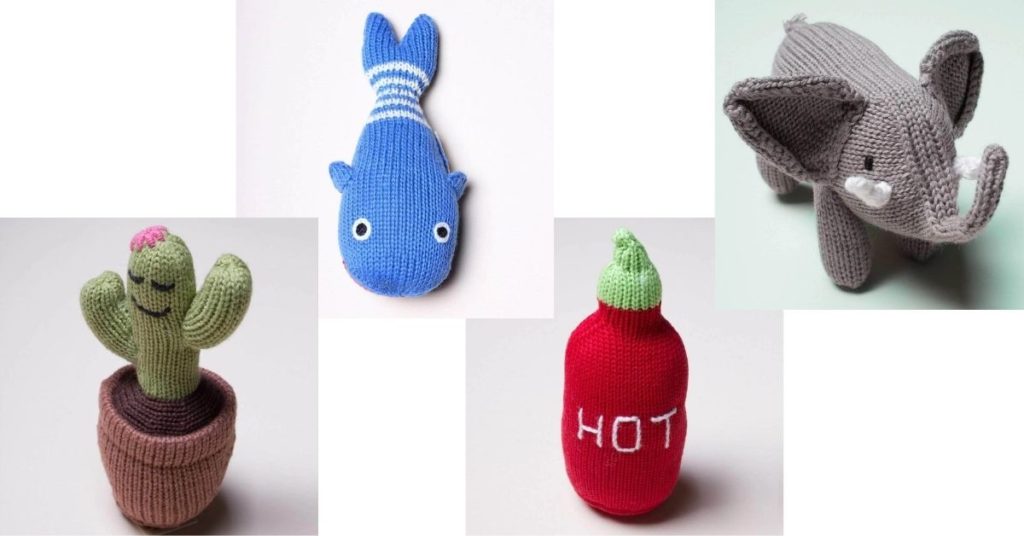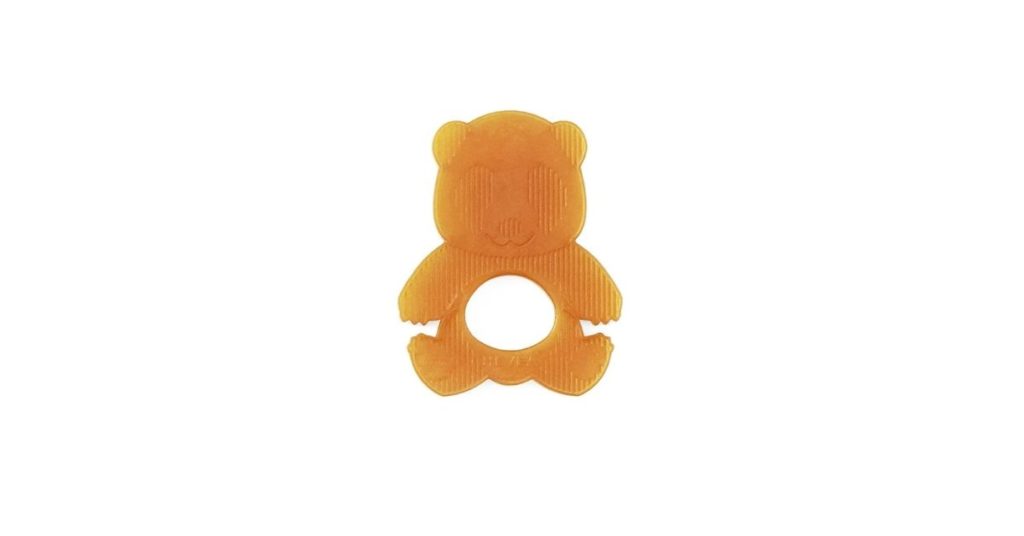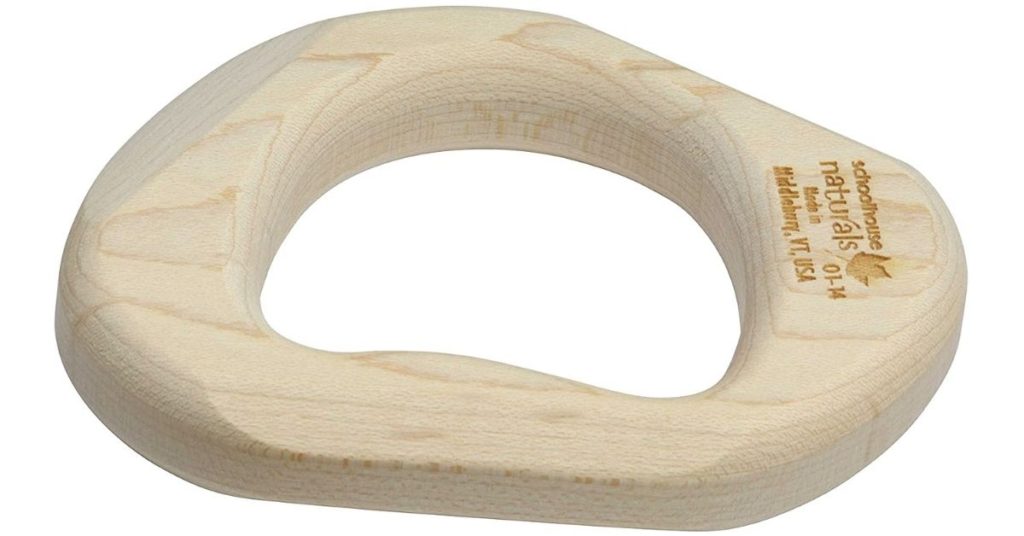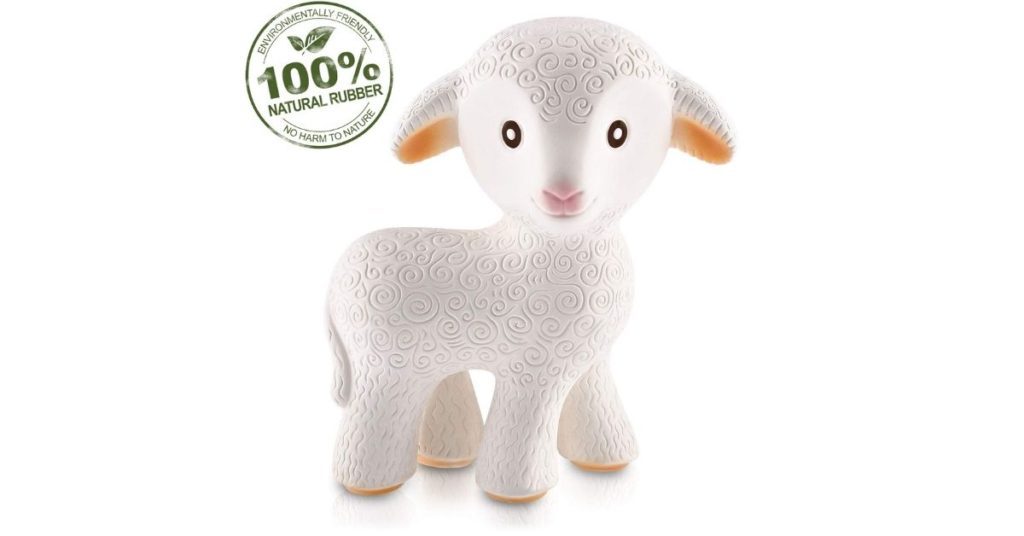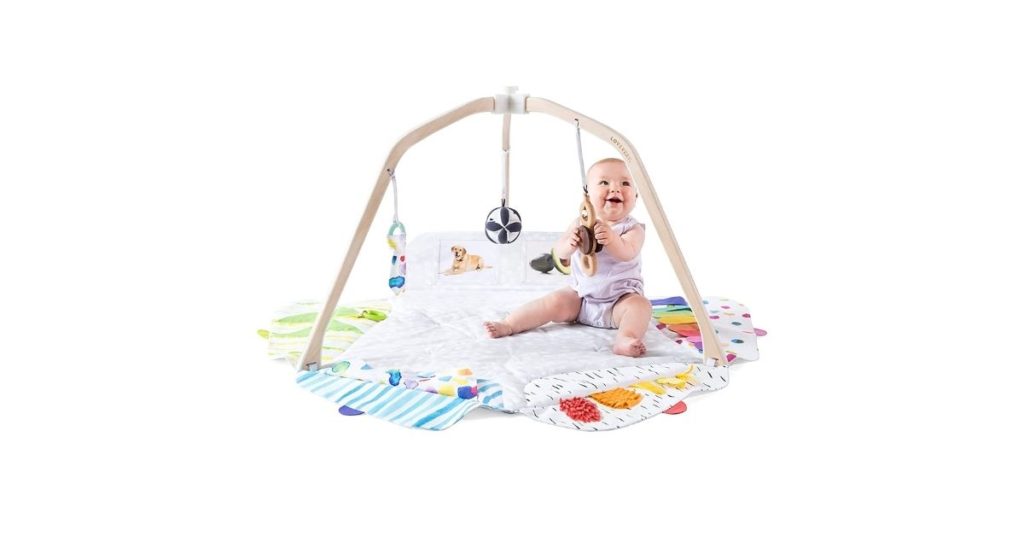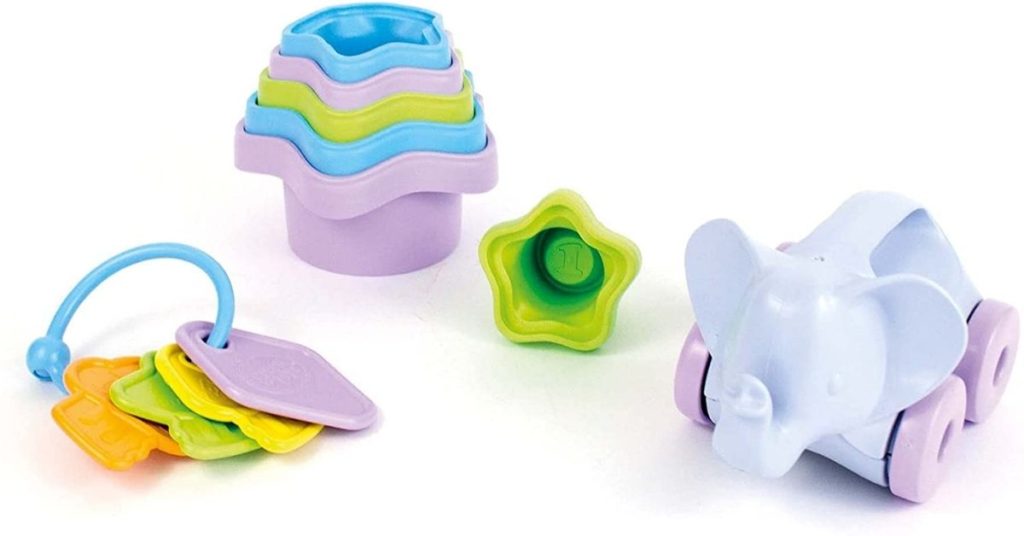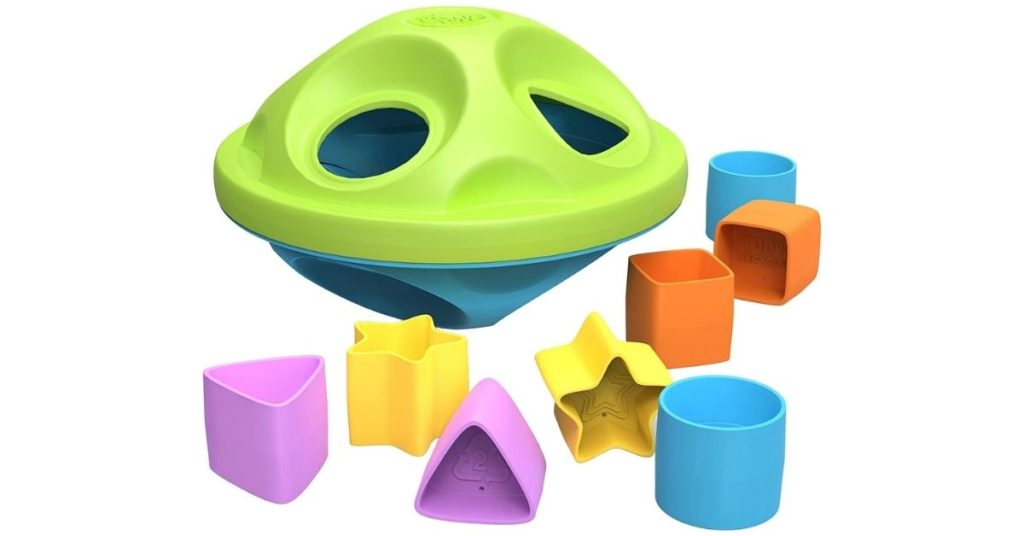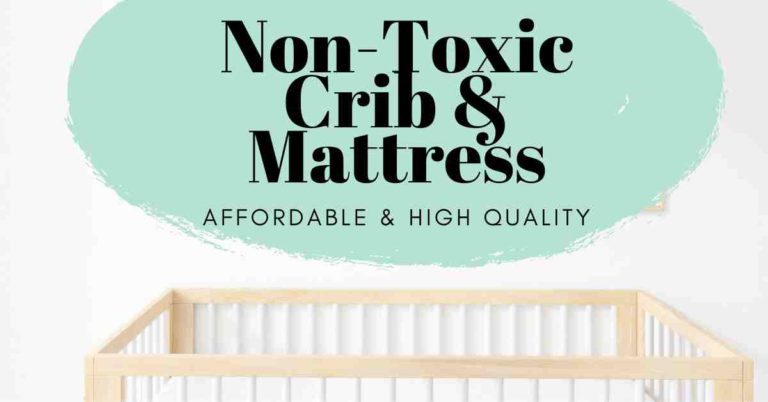Best Non-Toxic Baby Toys for 2022
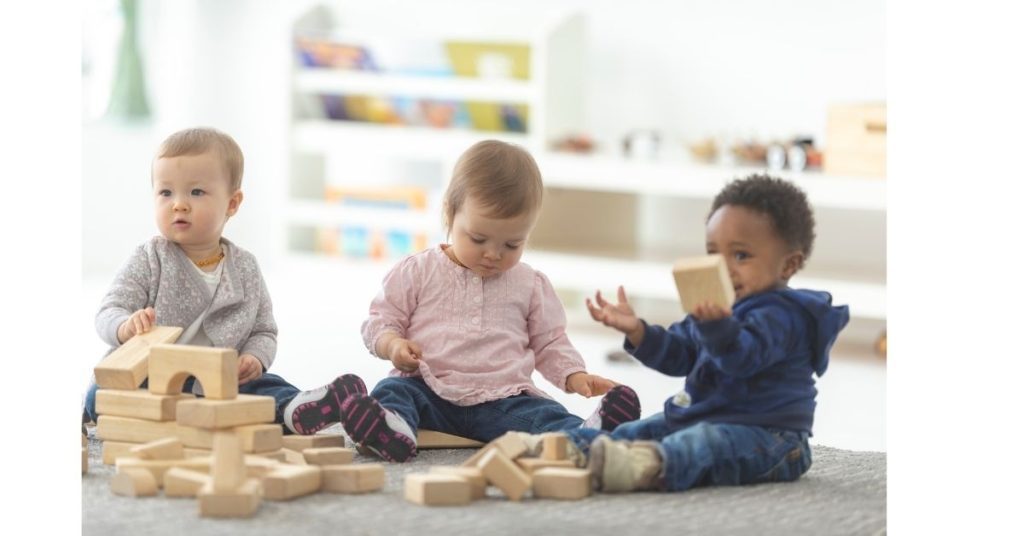
If you are around a baby, you are well aware that they put EVERYTHING in their mouth. This could be their feet (their sibling’s feet lol), toys, remotes, your sweatshirt string, the tiniest crumb ever on the floor (how did they even see that?!)… and the list goes on and on and on. Basically anything they can get their hands on will go into their mouth. The official term for this is baby mouthing and it’s a normal and healthy part of their development. This is a way to explore, taste, teeth, self-sooth, and build their immune system.
As we all know there are many objects that shouldn’t go into their mouths, however if it’s a baby toy then you would assume it’s ok! However, that’s not always the case. Like most things, some materials are better for you than others. That’s why I wanted to create a post about non-toxic baby toys that are made from safer materials. So whether you are looking to gift a baby toy, or buy one for your own little one, I got you covered! This post will highlight some of the best non-toxic baby toys for 2022 and the brands that create toys with safer materials.
What materials are toxic in baby toys?
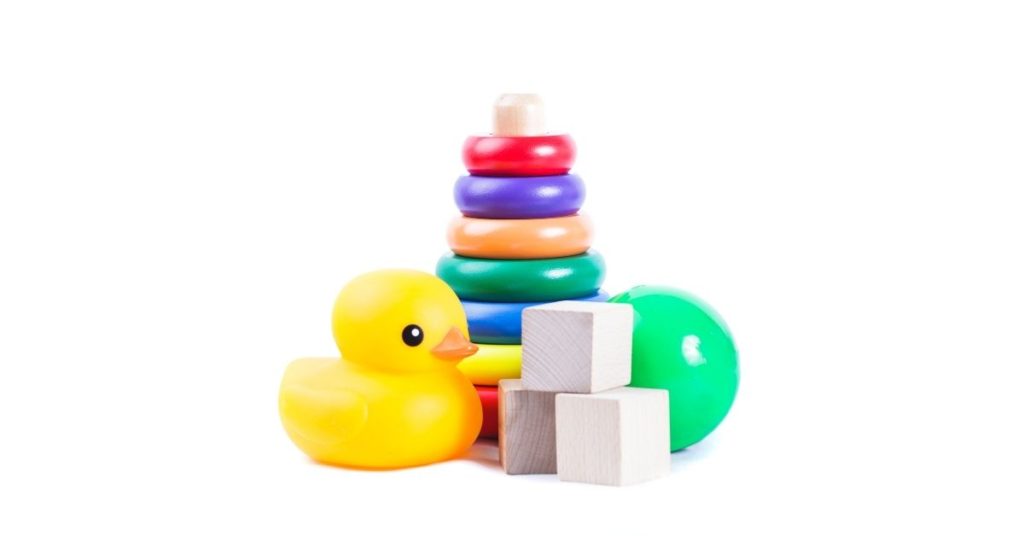
Here are the top offenders aka materials that are toxic in baby toys:
- Lead
- Plastics: Bisphenols (BPA + BPS), PVC, and Phthalates
- Formaldehyde
- Flame Retardants
According to this study published by Science Direct, children are more vulnerable to these types of chemicals than adults because of their “fast metabolic rate, high surface area to body weight ratio, and fast growth of organs and tissues.” Now let’s review each material in more detail.
Lead in Baby Toys
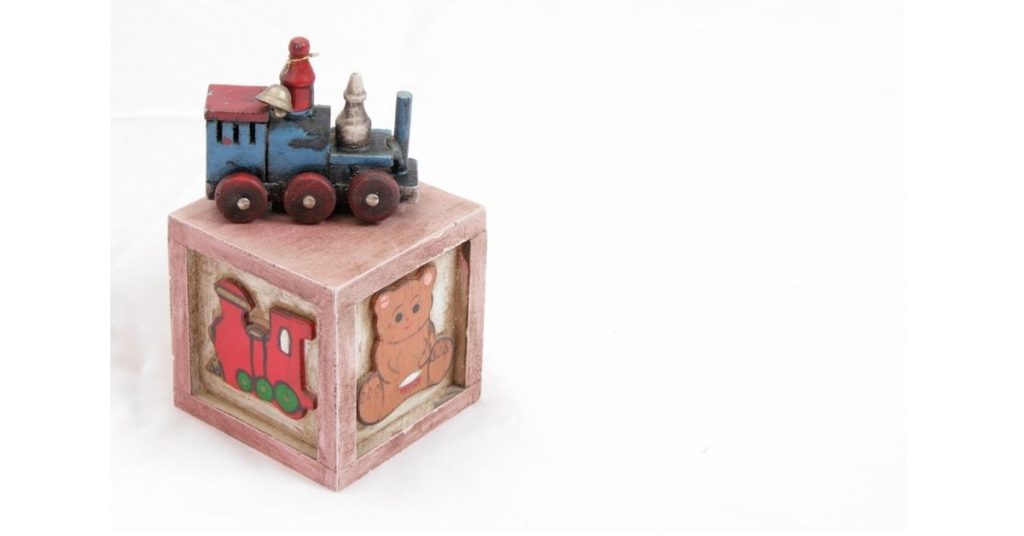
The most common way for kids to be exposed to lead is from paint in older homes. However, lead can also be found in older toys before regulations were put in place. According to the CDC, here are the health risks from lead exposure in kids:
- Damage to the brain and nervous system
- Slowed growth and development
- Learning and behavior problems
- Hearing and speech problems
Plastics in Baby Toys. Are plastic toys bad for babies?
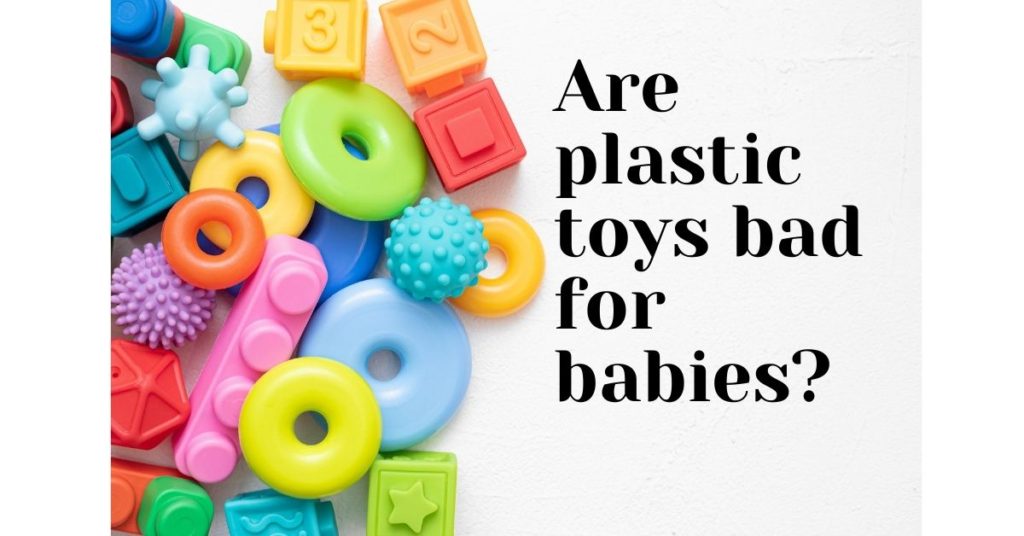
Are plastic toys bad for babies? Yes, some plastic toys can be bad for babies. It’s pretty darn hard to avoid plastic toys, however some are better than others. I know in our household, many of our toys are some type of plastic. The main plastic concerns are Bisphenols (BPA + BPS), PVC, and Phthalates. There are so many studies about the hazards of these plastics so regulations have been put in place. Checkout this simple guide from UC Davis Health on why plastics are a concern for kids. Here is a summary of the concerns:
Toxic Plastic: Phthalates
Phthalates soften plastic and can be used to bind scent to toys. Do you remember the smell of My Little Ponies back in the day? I sure do and it makes me wonder if that was phthalates in action. According the the UC Davis publication, phthalates can have these adverse effects:
- Hormone disruption
- Reproduction problems
- Asthma
- Cancer
Toxic Plastic: PVC
Flexible plastic toys may contain PVC, think rubber duckies, dolls, play mats. According to the UC Davis publication PVC can have these adverse effects:
- Reproductive disorders
- Development disorders
- Liver dysfunction
- Cancer
Toxic Plastic: Bisphenol (BPA & BPS)
Bisphenols are used to make polycarbonate plastic, and they are hard to avoid. Both BPA and BPS are hormone disruptors. According to Mayo Clinic, BPA can have these adverse effects:
- Brain and prostate gland issues
- Children’s behaviorial issues
- Increased blood pressure
- Type 2 diabetes
- Cardiovascular disease
Formaldehyde in Baby Toys
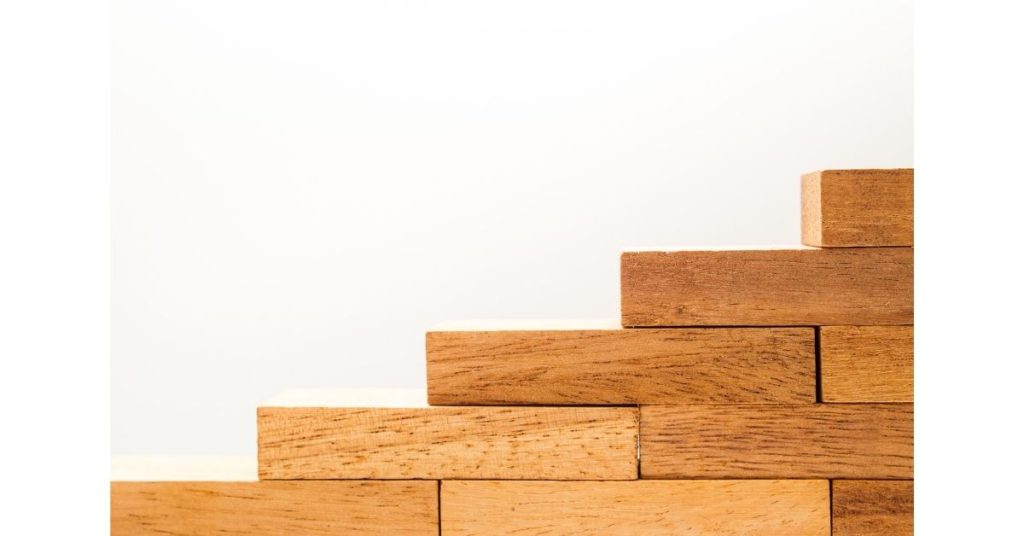
Toys made of composite wood could contain adhesives that use formaldehyde, which is a VOC (Volatile Organic Compound). This publication from the Environment California Research & Policy Center sites many studies that note formaldehyde as having the following adverse effects:
- Allergies
- Asthma
- Cancer
Flame Retardants in Baby Toys
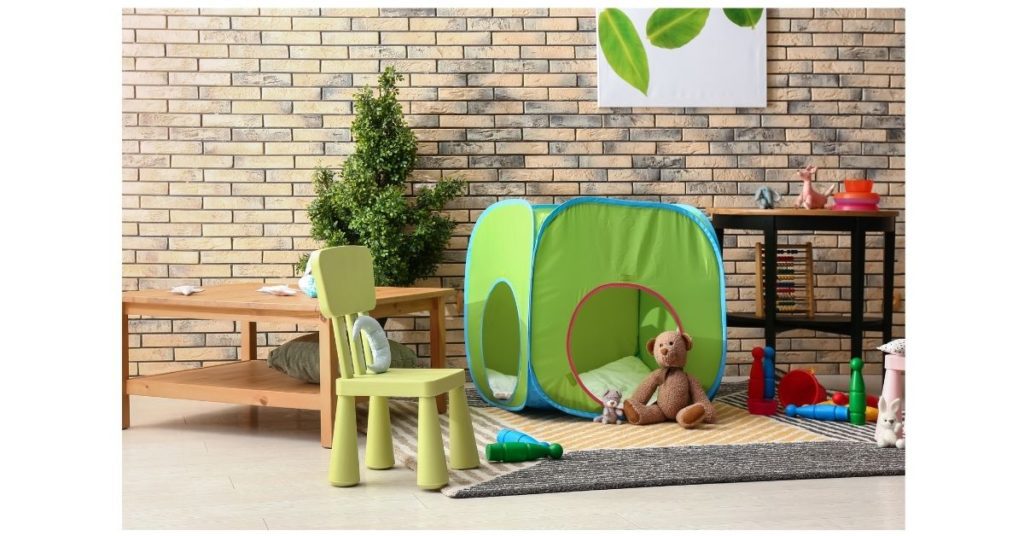
Some flame retardant chemicals have been banned when it was discovered there were health risks such as adverse effects on children’s brain development, and hormone disruption.
The interesting part is these banned chemicals are still showing up in toys because they may appear in recycled plastic (chemicals usually come from electronics being recycled). So they aren’t intentionally being used, rather they “hitchhike” into products that use recycled plastic. Research Gate published this study that states:
“Recycling plastics containing toxic flame retardant chemicals found in elec-tronic waste results in contamination of new plastic children’s toys and related products. The substances include octabromodiphenyl ether (OctaBDE), deca-bromodiphenyl ether (DecaBDE), and hexabromocyclododecane (HBCD). This study found all three toxic chemicals in recycled plastic children’s products. In a survey of products from 26 countries, 90% of the samples contained OctaBDE or DecaBDE. Nearly half of them (43%) contained HBCD. Recycling materials that contain persistent organic pollutants (POPs) and other toxic substances contaminates new products, continues human and environmental exposure, and undermines the credibility of recycling.”
Research Gate
The Washington Department of Ecology published a study finding toxic flame retardants in kids play tents, tunnels, and chairs.
Now that we’ve covered the concerning materials in baby toys that have been used throughout the years, let’s review how toys are being regulated in the United States.
Are Toys Regulated?
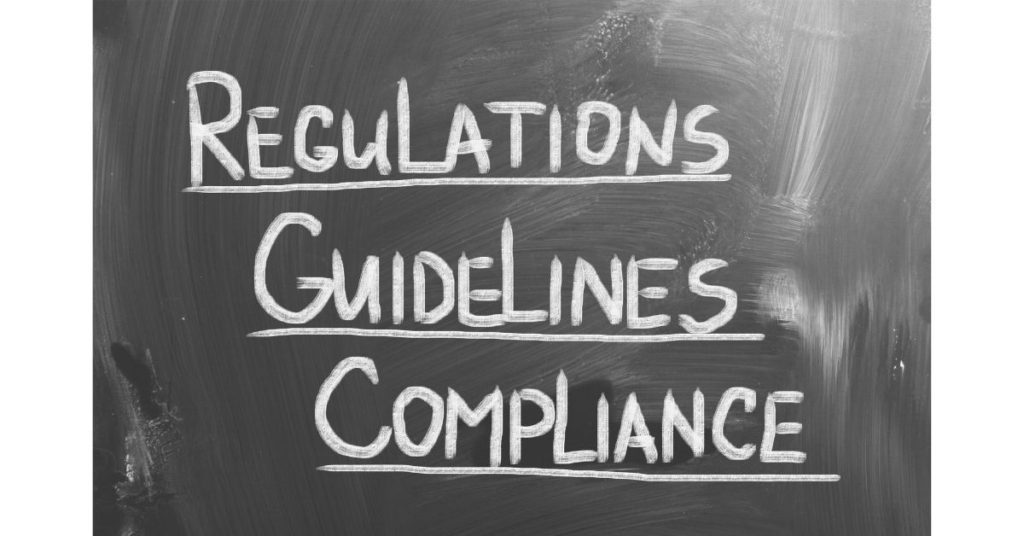
Yes, in the United States the Consumer Product Safety Committee (CPSC) helps to regulate the safety of toys. There are also regulations with other countries, but for this article I’m focused on the United States.
The CPSC requires:
“All toys intended for use by children 12 years of age and under must be third party tested and be certified in a Children’s Product Certificate as compliant to the federal toy safety standard enacted by Congress, and to other applicable requirements as well.
CPSC
Here are the toy safety standards the CPSC calls out:
“The toy safety standard refers to ASTM F963-17, as incorporated with a modification shown in 16 CFR Part 1250. All children’s toys manufactured or imported on or after February 28, 2018, must be tested and certified to ASTM F963-17.
ASTM F963-17, The Standard Consumer Safety Specification for Toy Safety, is a comprehensive standard addressing numerous hazards that have been identified with toys. In 2008, the Consumer Product Safety Improvement Act of 2008 (CPSIA) mandated that the voluntary toy safety standard in effect at that time become a nationwide mandatory children’s product safety rule.”
CPSC
In a nutshell, toys manufactured or imported must be tested and certified to ASTM F963-17 safety standards (as of Feb 28, 2018). The ASTM is very comprehensive, and you actually have to pay to get a copy. So I researched specific concerns such as heavy metals and plastics to see what’s being regulated.
Heavy Metal Testing for Toys:
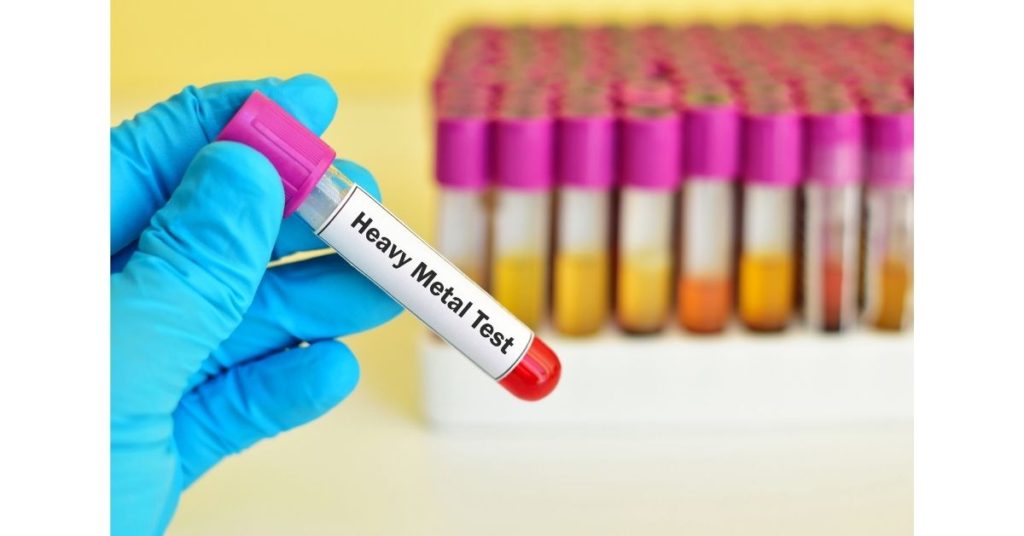
ASTM F963-17 requires toys to be tested for these 8 heavy metals:
Antimony, Arsenic, Barium, Cadmium, Chromium, Lead, Mercury, and Selenium.
Here’s what CPSC has to say about the products that would be tested:
“The following criteria are considered reasonable for the classification of toys that are likely to be sucked, mouthed, or ingested: (1) all toy parts intended to be mouthed or contact food or drink, components of toys which are cosmetics, and components or writing instruments categorized as toys; (2) toys intended for children less than 6 years of age, where there is a probability that the parts or components of the toy would come into contact with the mouth.”
“Therefore, if your product is age-graded as intended for use for children age 6 years and above, and is not likely to be sucked, mouthed, or ingested, it does not need to be tested for the eight metals.”
CPSC
The takeaway here is to keep older kids toys away from babies since it wouldn’t go through the same testing.
Lead Testing for Toys:
Here’s what the CPSC has to say about lead testing for toys:
“With a few limited exceptions explained below, all children’s products manufactured in or imported into the United States must not contain more than 100 parts per million (ppm) of total lead content in accessible parts.”
CPSC
The law defines a “children’s product” as a consumer product designed or intended primarily for children 12 years of age or younger.
So what does accessible parts mean? Here’s what the CPSC states:
“The total lead content limits do not apply to component parts of a children’s product that are not accessible to a child through normal and reasonably foreseeable use and abuse of the product. In addition to passing all applicable use and abuse testing, children’s products or component parts of children’s products which are enclosed, encased, or covered by fabric must measure 5 centimeters or greater in all dimensions to be considered inaccessible.
CPSC
Here’s what CPSC has to say about lead paint:
“All children’s products, and some furniture, for adults and children, must not contain a concentration of lead greater than 0.009 percent (90 parts per million) in paint or any similar surface coatings. Household paints must also meet this requirement.”
CPSC
Plastic Toy Regulations
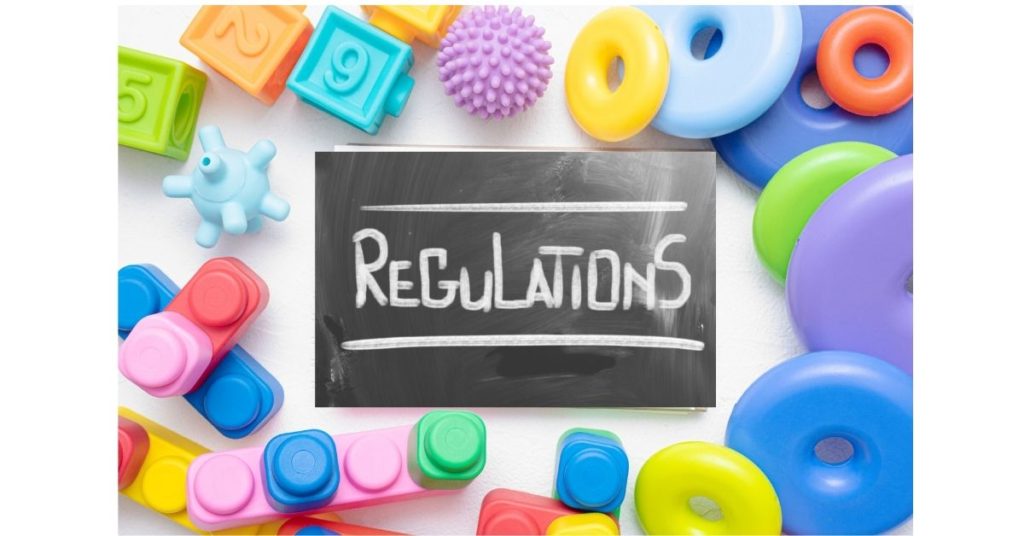
Phthalate Toy Regulations
Here are regulations put in place for phthalates:
“In the Consumer Product Safety Improvement Act of 2008 (CPSIA), Congress permanently prohibited children’s toys or child care articles containing concentrations of more than 0.1 percent of three types of phthalates: di-(2-ethylhexyl) phthalate (DEHP); dibutyl phthalate (DBP); or, benzyl butyl phthalate (BBP).”
CPSC
PVC usually contains phthalates since it helps soften the plastic, think rubber duckies. Since phthalates are regulated I’m hoping most of the toys don’t contain PVC, but you don’t know unless the company calls it out. You can also look for the plastic symbol #3 which is PVC – avoid this!
BPA Toy Regulations:
In 2012, the FDA banned BPA from sippy cups and baby bottles but there are no regulations when it comes to toys.
Flame Retardant Toy Regulations
States are restricting certain flame retardant chemicals, and the following 5 chemicals are on the Prop 65 list. So if a product states prop 65, then you should avoid.
- Tris(2-chloroethyl) phosphate (TCEP)
- Tris(2,3-dibromopropyl) phosphate (TDBPP)
- Tris(1,3-dichloro-2-propyl) phosphate (TDCPP)
- Polybrominated biphenlys (PBBs)
- Pentabromodiphenyl ether mixture (Penta-BDE, DE-71)
Formaldehyde Toy Regulations
Regulations have been put in place by a handful of states and the EPA states this about their ruling:
“On December 12, 2016, EPA published in the Federal Register a final rule to reduce exposure to formaldehyde emissions from certain wood products produced domestically or imported into the United States.”
What materials in toys should babies avoid?
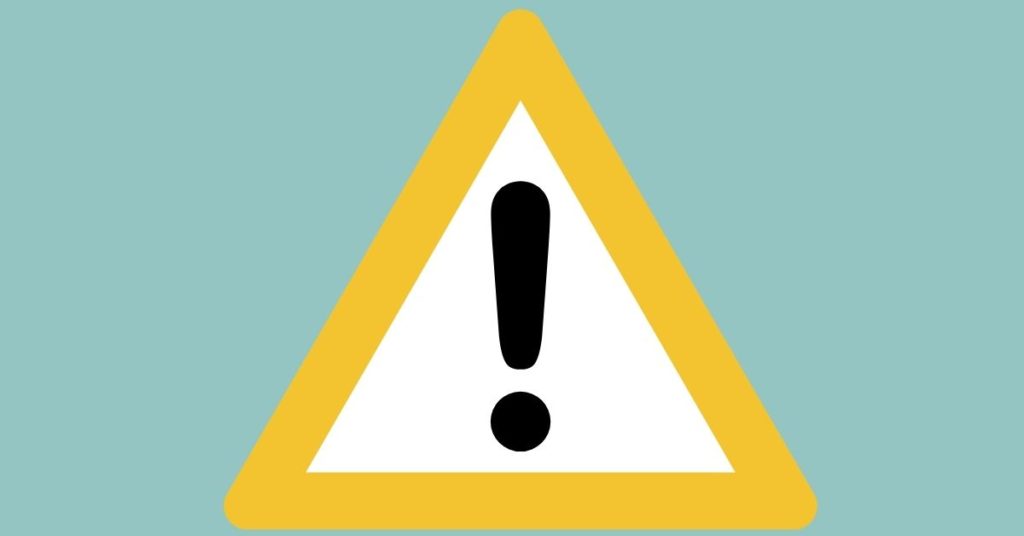
When it comes to the materials that are used to create a baby toy, here are the types of toys babies should avoid:
- Avoid plastic #1, 3, 6, 7
- Avoid toys that have Prop 65 label
- Avoid hand-me-down, yard sale, and antique baby toys. Prioritize avoiding those that you think will end up mostly in their mouth since they may have been manufactured before regulations were put in place.
- Avoid painted toys or toys with flaking paint
- Avoid buying imported toys where there are less regulations. Prioritize buying from the US, Europe, or Canada.
- Avoid soft plastics unless they are marked as BPA, Phthalate, PVC free
- Avoid giving your baby toys intended for older age groups since they may not go through the same regulations
- Avoid recycled plastic, exception is if the company is transparent about where they get the recycled materials. A popular product is Green Product, their toys are made from recycled milk jugs.
- Smelly toys! If it smells fruity it may contain phthalates, and if it smells like plastic it may contain PVC.
How can you tell if a baby toy is non-toxic?
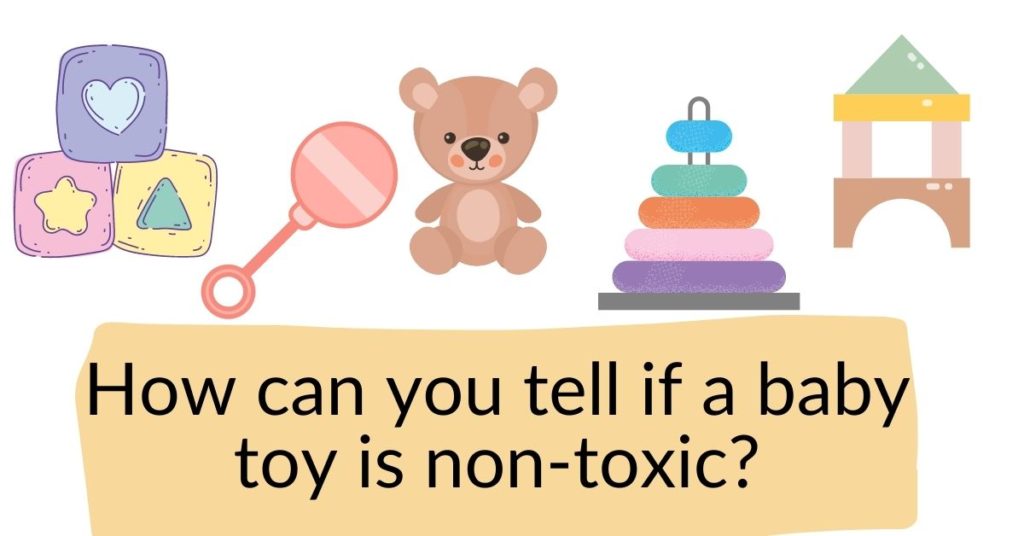
When it comes to the materials that are used to create a baby toy, here are the safer materials to look for:
- Natural rubber
- Solid wood toys
- Food grade silicone
- Organic soft cloth and plush toys
- Non-toxic paint, dyes, sealants (avoid paint if possible)
- Plastic #2: High-Density Polyethylene (HDPE), one of the safer plastic options typically used for milk jugs
- Read the labels!
- Look for toys that callout free from BPA, PVS, and Phthalates
- Look for “ASTM F963” on the bottom or side of the toy’s packaging which means a toy meets the latest toy safety standards
Best Non-Toxic Baby Toys for 2022
This post contains affiliate links, which means I receive a small commission, at no extra cost to you, if you make a purchase using this link. Please see my disclaimer for more details. Your purchase helps support my work in bringing you information about non-toxic living.
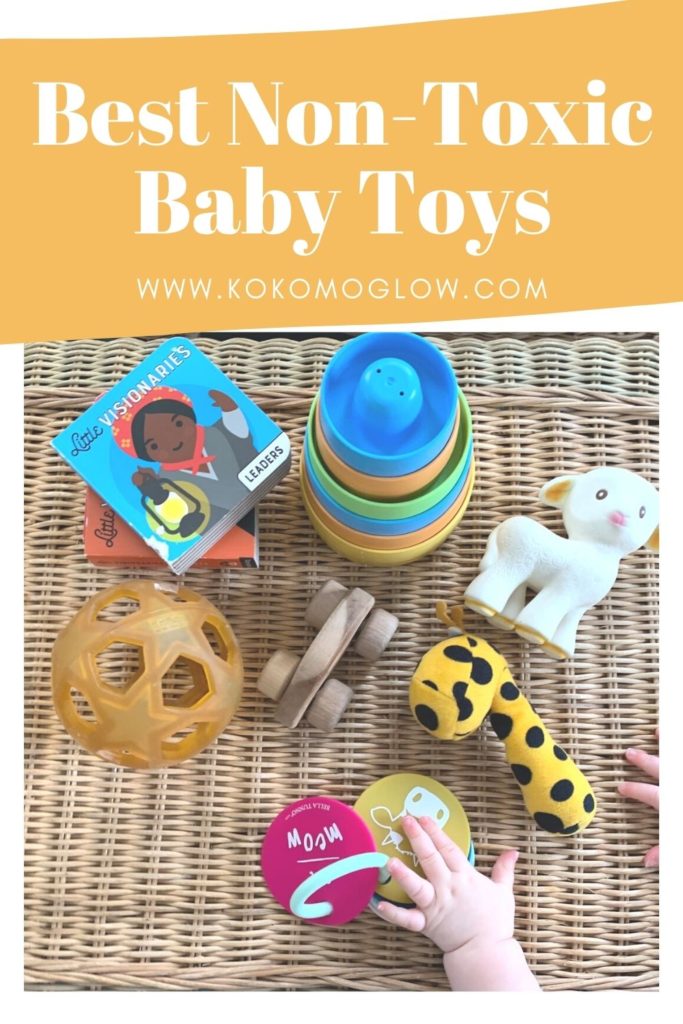
Non-Toxic Baby Rattles
Estella Organic Rattles
OMG I wish I had known about these sooner! These Estella organic rattles are frickin adorable, and so many fun options to choose from! I think this may become my go-to baby shower gift. Here is product info from their website:
- Handmade in Peru by local craftsmen using 100 percent certified organic cotton.
- Compliant with CPSIA
- Use safe eco-friendly dyes
- Machine washable
Non-Toxic Baby Teethers
HEVEA Panda Baby Teether
Here are some of the features that make the HEVEA Panda a great teether:
- Made from natural rubber and is PVC Free, BPA Free, Phthalate Free, Plastic Free, Nitrosamine Free. Made from the sap of the Hevea Brasiliensis Trees in Malaysia
- Soothes gums with different textures, and you can put in the freezer to add an extra soothing factor
- The packaging is FSC-certified.
- Highly rated teether
Maple Landmark Maple Baby Teether
This Maple Teether from Maple Landmark has a simple design and is a great non-toxic option. Here are some of the feature listed on their product page:
- Made in Vermont, USA
- Cut from solid hardwood maple.(unfinished so no toxic stains)
- Sanded smooth for little mouths (they state no splinters)
- Highly rated product
- For added protection you could apply a food grade oil
- You wash by wiping with warm soapy water
Here are a couple things to note for the care of this item: For added protection you could apply a food grade oil, and you wash by wiping with warm soapy water. You should not soak the teether or put in the dishwasher since it can dry unevenly causing the wood to crack and be rough.
Caaocho Pure Natural Rubber Baby Teether
I love love love this lil lamb, this Caaocho rubber baby teether is a favorite in our household and it’s so darn cute! Here are things I love about the product:
- Made of high quality natural rubber material. BPA, PVC, Phthalate Free.
- Sealed holes so no concern about water and saliva getting into the toy.
- Easy to grasp, bendable, great for soothing the gums!
- Easy to clean
Non-Toxic Baby Play Gyms
Lovevery Play Gym
People seem to love this product, and the Lovevery Play Gym is ranked as one of the best non-toxic play gyms around. It’s a bit on the spendy side, but it’s designed to be used from when they are itty bitty doing tummy time up until they are one and hanging out in a sweet fort. Here are some of the great features of this product called out on the product page:
- Materials: Water-based finishes, sustainably-sourced wooden legs and batting ring, organic cotton teether and ball, silicone teether. Free from PVC and flame retardants. Product is tested for safety.
- 5 Montessori-inspired development zones to (can reveal or conceal) teach focus, sound making, encourage sensory exploration, hiding and finding, and exploring colors.
- Stage-based, so activities will grow with your baby
- Machine washable mat and cotton teether
- Easy to set-up
- Highly rated all over the internet, amazon choice product
Non-Toxic Baby Toy Bundle Set
Green Toy Motor Skill Toys
The Green Toy Motor Skill toy is a fabulous starter kit from one of my favorite brands. If you are going to have plastic toys around, this is one of the best options out there. Here are some great things about the product:
- Materials: Made from 100% recycled milk jugs. Plastic is HDPE #2. Safe & Non-toxic, no BPA, Phthalates or PVC
- Made in the USA
- Dishwasher Safe
- Packaged with recycled and recyclable materials printed with soy inks
- Great gift for a baby, includes three different toys to keep them busy. It includes keys, stackable cups, and elephant push toy. Stackable cups can be used for bath time too 🙂
Non-Toxic Toy Balls
HEVEA Star Ball
The HEVEA star ball is rolling around all over the floor at our house. It’s another great rubber product and here are some key features of the product:
- Material: Natural rubber, Free from BPA, plastics, PVC, petroleum, phthalates.
- Complies to safety standard: EN 71 / REACH / CPSIA/ ASTM / CHPA/ CCPSA
- Easy to grasp, soft, and flexible. Baby will roll it, throw it, and bite it (mine uses it as a teether frequently).
Non-Toxic Shape Sorter Baby Toy
Green Toy Shape Sorter
Sometimes I think I love the shape sorter more than the baby does, ha! This Green Toy shape sorter is a great option for keeping your little one entertained. They state it’s for 6 months and up. Here are some features from the product page:
- Materials: Made from 100% recycled milk jugs. Plastic is HDPE #2. Safe & Non-toxic, no BPA, Phthalates or PVC
- Made in the USA
- Dishwasher Safe
- Packaged with recycled and recyclable materials printed with soy inks
- Develops recognition of shapes and colors while also encouraging eye-hand coordination, problem solving and fine and gross motor skill development.
Final Thoughts
My baby is currently in the phase of putting EVERYTHING in their mouth so it was really interesting to do a deep dive in to the world of baby toys and learn what are the better non-toxic toys for babies. Once again you would assume if the toy was being sold then it would be safe, but sadly this is not always the case. There have been regulations put in place throughout the years to make toy materials safer, however some toys are still better than others.
Many times it’s hard to even control what your baby is playing with when it comes to playing with others, getting gifts, childcare and wanting to reuse toys. The important thing is if you are buying anything new, creating a registry, or buying a gift for someone then vote with your dollar and choose a non-toxic option. My toy situation is a far cry from being all non-toxic, however I try to make sure the main thing going in to the babes mouth is made from better for you materials. Remember it’s all about the long-term exposure. Everyday we are exposed to toxins, and it all adds up. So I’d say if you can reduce exposure here and there then go for it!
One tid bit I really liked while going through various studies is the recommendation published by Science Direct to “reduce the amount of new toys introduced into our households every year. This is also supported by a recent study showing that the quality of children play is negatively influence by the abundance of toys, and that fewer toys may help toddlers to focus better and play more creatively”
I’d love to hear if you have a favorite non-toxic baby toy. Please comment below.
Thanks for reading!
Brekke Jo


